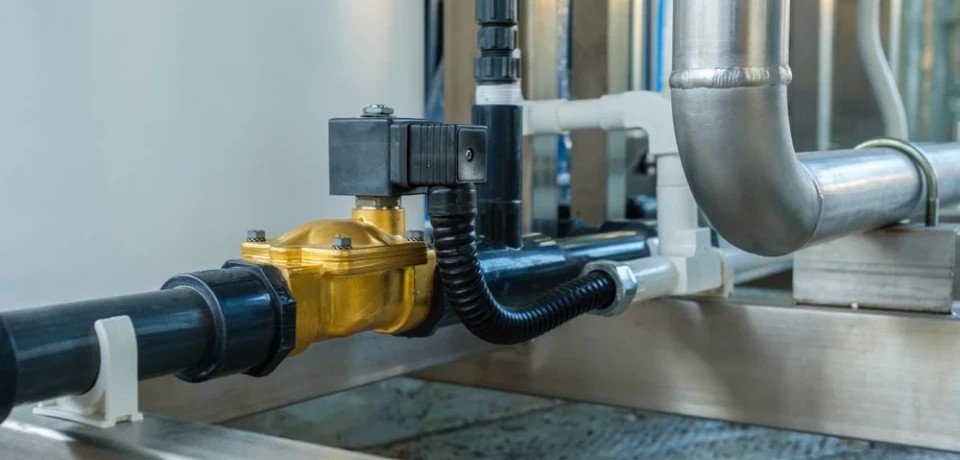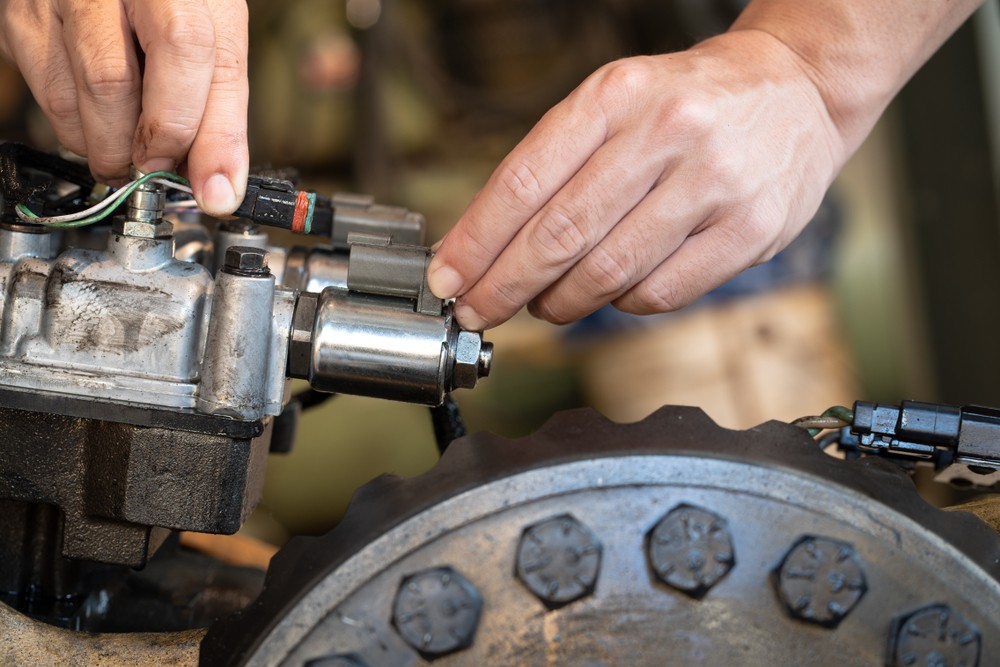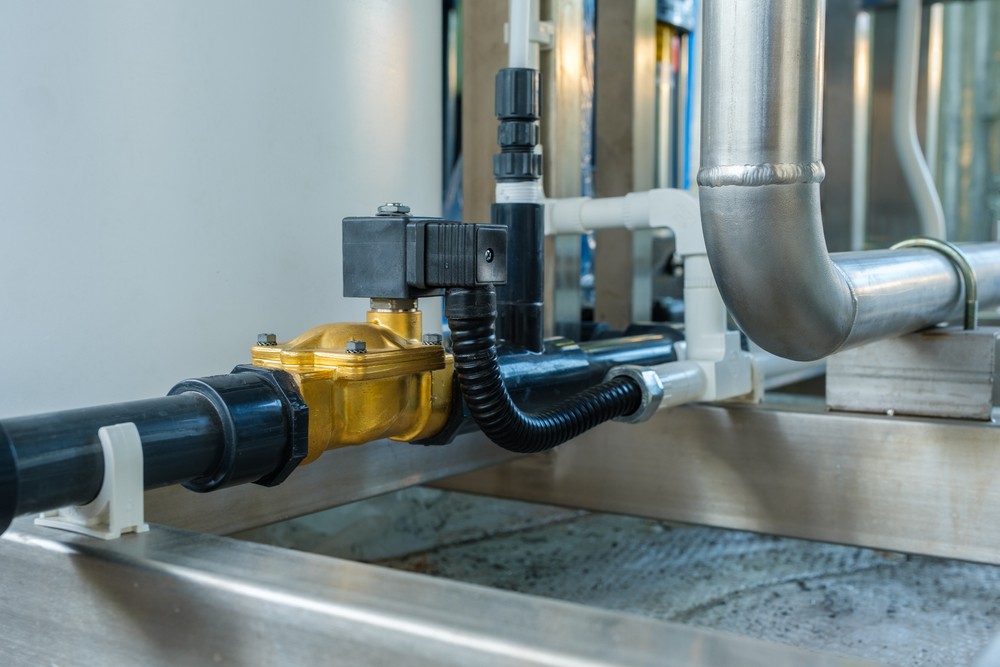Free UK Shipping over £100
Fast Shipping
Worldwide Shipping
Technical Sales Team

Solenoid valves are most frequently used to shut off, release, dose, distribute or mix fluids (liquid and gases).
Solenoid valves control fluid flow and when energised, the valve moves to the other position.
They are often used in monitoring systems; like pilot gas alarms to shut off a gas supply when a leak is detected.
Due to its structure and type, the solenoid valve is easy to control internal leakage, until it’s reduced to zero.
Therefore, it’s very safe to use solenoid valves, which can be suitable for corrosive, toxic or high and low temperature media.
This article will explain the difference between direct-acting and pilot solenoid valves and everything you need to know.

These valves tend to be smaller in size and are typically used in low flow or high-pressure applications.
The most common example of a solenoid is in a car ignition system. A solenoid is used to turn on the starter motor, which as a result starts the engine.
As they are widely used to control fluid flow, they are often used in home appliances such as washing machines.
Direct-acting solenoid valves follow simple working principles and do not use a diaphragm, as their seal is part of the moving core and remains closed even when no pressure is being applied.
This is in contrast to a pilot operated valve, which requires some pressure for the valve to stay closed. The main components of a direct-acting 2-way plunger valve such as the Type 6013 are a coil, a closing spring, a valve body cover, and the valve body with the seat.
With a normally closed direct acting solenoid valve, the path to the outlet port is blocked when no current is applied to the coil as the closing spring presses the plunger onto the valve seat.
This then generates current through the coil which pulls the plunger and the seal against the spring force, drawing the medium upward.
As a result, the channel is opened for the medium to flow through the direct-acting valve.
The benefits of direct-acting solenoid valves:
Cost-effective direct-acting 2-way plunger valves are used in universal applications for neutral and clean liquids, gases, and vapours.
Versions with special high-quality materials also allow for use in mildly acidic and alkaline solutions. They can therefore be used for a broad spectrum of applications, such as shut-off, dosing, filling and ventilation.
Due to a spring-damped seat seal, these valve types have a long service life, as well as increased switching cycles and service life due to sliding ring bearings.

Pilot operated solenoid valves
Pilot solenoid valves use the differential pressure of the medium over the valve ports to open and close them.
These are also known as servo-assisted solenoids which provide high flow rates and can operate at high pressure and temperature ranges, with lower power consumption.
A servo-assisted, diaphragm solenoid valve with pilot control employs the use of a small chamber directly above the diaphragm to assist in the function of the valve.
Process fluid enters the chamber through a small orifice in the inlet port and a normally closed valve.
The compression against the diaphragm forces pressures against the seat to maintain the closing seal.
Once the current is applied to the pilot, the diaphragm is then pulled upwards against the spring pressure; with the pilot fluid being forced back through the orifice to rejoin the main flow through the valve body.
The main areas of application for pilot-controlled diaphragm solenoid valves are liquid or gaseous media (such as compressed air, water, and hydraulic oils) within closed circuits in which little or no differential pressure is present for opening and closing.
The Type 290 features a soft-kick function for longer service life and all of the DC versions feature energy-saving power reduction.
The Type 6213 EV, on the other hand, uses a spring as a coupling for the ‘diaphragm-friendly’ opening of the main seat in frequent working cycles.
Benefits of Pilot solenoid valves;
The difference between the two
The main difference between the two valves is that the direct acting solenoid valves have a direct connection with the opening and closing armature.
Compared to pilot solenoid valves which employ the use of the process fluid to assist in piloting the operation of the valve.
If you would like to discuss these products further in relation to your own requirements, please do not hesitate to contact our expert team.
Contact our technical sales advisors here.
Our team of engineers are fully equipped to provide bespoke system design and manufacture.
This process involves specifying, procuring, calibrating and maintaining instrumentation and control systems for industrial and commercial process control applications.
Call our technical sales team for advice

This site uses cookies to monitor site performance and provide a more responsive and personalised experience. You must agree to our use of certain cookies. For more information on how we use and manage cookies, please read our Privacy Policy.